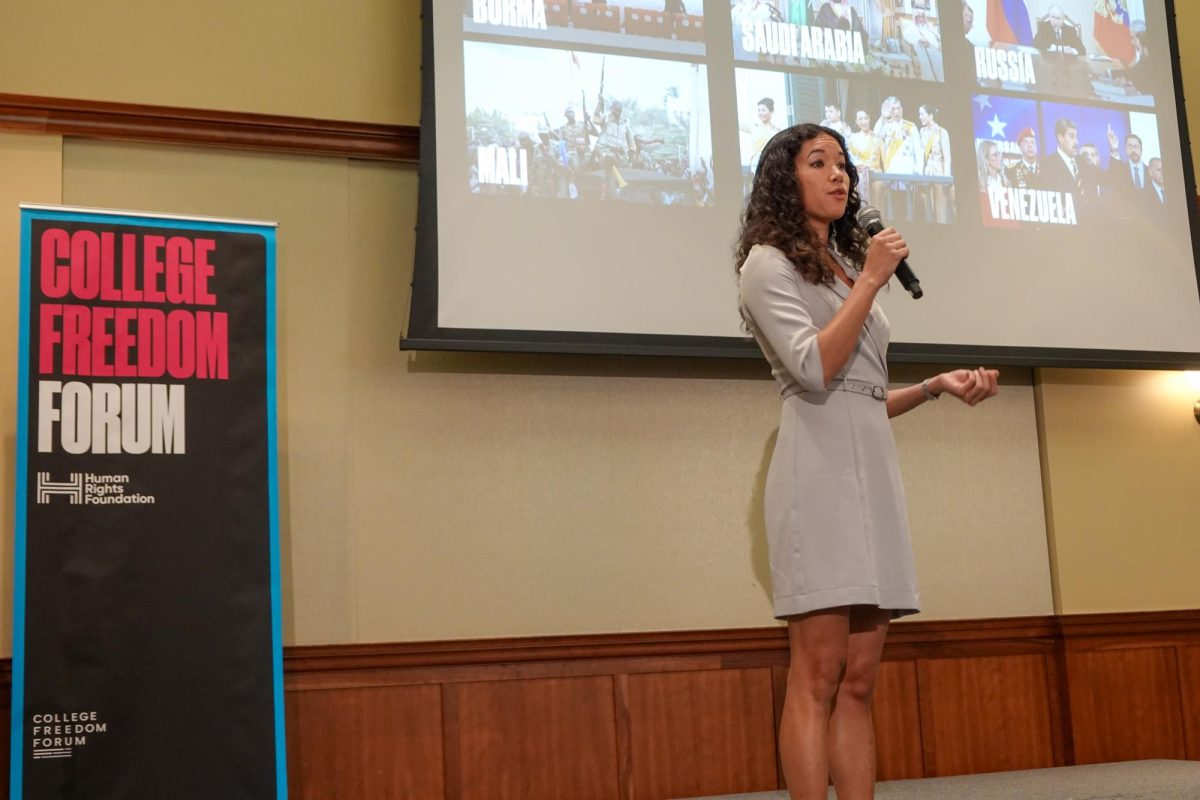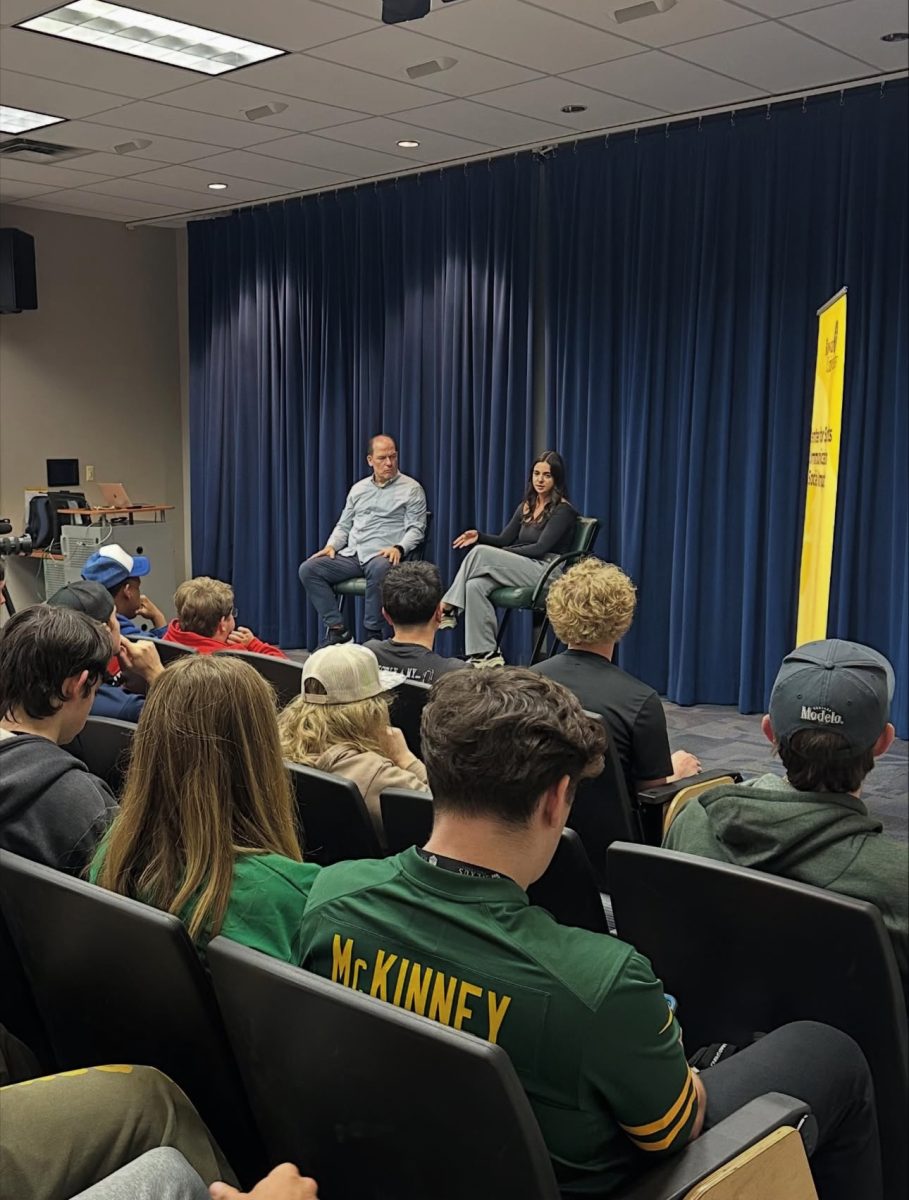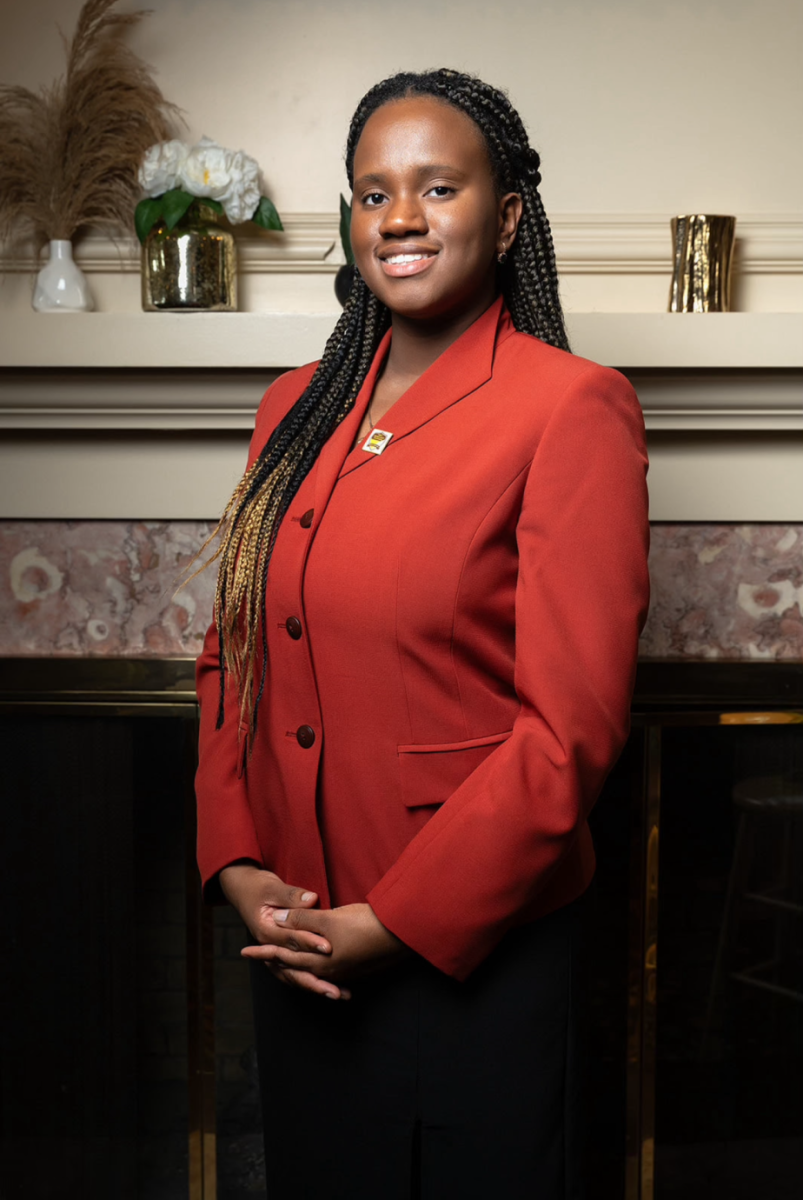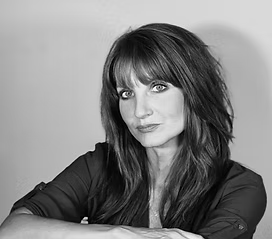“Carol,” is a lot of things.
It’s an adaptation of the brilliant Patricia Highsmith novel “The Price of Salt.” It’s a masterpiece in the purest sense of the word; it’s Todd Haynes’ most handsome, affecting work to date. It’s a showcase for Cate Blanchett, and evidence that she is truly the best actress working today. How she manages to still surprise us all film after film is a thrilling mystery. Most importantly, is that it is one of the greatest love stories ever committed to film.
Set in 1950s New York, Therese Belivet (Rooney Mara) is introduced to us as she begins her job as a salesgirl working in a department store. It’s there she meets Carol (Blanchett) in a chance encounter that instantly finds them both being drawn to one another like moths to a flame.
Dressed to the nines, Carol approaches Therese with a seductive drawl and a smirk to match under the guise of looking for a gift for her daughter. She’s a predator, in every sense of the word, with Therese playing the role of the willing prey. The two flirt in a way that one might miss at a first glance, but upon closer inspection, the chemistry between the two is palpable. Seemingly on accident, Carol leaves her gloves on the shop counter as if to validate the interaction. Following an attempt to return said gloves, a lunch, a few martinis and a thousand stolen glances, an affair begins. It is every bit as doomed as it is passionate.
From a quick glance, it may be hard to see why these two are drawn to one another, despite their downright satisfaction with their personal lives. Therese not only has a dull job, but a dull boyfriend named Richard (Jake Lacy) who wants nothing more than to whisk her away to France for a romantic vacation. He affectionately calls her Terry, which we see has a grating effect on Therese. Carol, on the other hand is trapped in a loveless marriage to Harge (Kyle Chandler) but forced to stick around for her daughter Rindy. There’s hints to an earlier affair with her best friend and moral rock Abby (Sarah Paulson), but we’re never told explicitly what happened.
And that’s what makes “Carol” such a brilliant film. It’s in those quiet moments, and all of the things we don’t know, that add so much weight to the story. No matter how quick or fleeting, each glance and every touch is a reaffirmation of love, a secret code that Therese or Carol can depend on to communicate their feelings. We feel the intensity and the strength, despite it never being explicitly stated. Whether this is because Haynes and screenwriter Phyllis Nagy prefer visuals to words, or simply a product of the time period, it’s a brilliant choice that adds so much power to the story.
“What a strange girl you are. Flung out of space.”
There has been much buzz around Mara’s performance; she famously won the Cannes Film Festival’s Best Actress prize, and is in the center of a debate concerning awards category placement. Will she be recognized in Supporting Actress, or Lead Actress? I can undoubtedly say that Mara is a lead through and through. The film may be called “Carol” but this is Therese’s story and to call her a supporting actress is a slap in the face.
As for her actual performance, she’s great. After winning an Oscar nomination for playing the domineering Lisabeth Salander in “The Girl With The Dragon Tattoo,” Mara does a complete 180 and disappears into the beguilingly quiet Therese. It’s easy to overlook nuance and mistake it for blandness, but I’m not sure anyone else could have so effortlessly captured the frustrating nativity of someone coming to terms with their sexuality for the very first time.
Blanchett, however, is the true standout. From her very first appearance in the film, it seems as if Highsmith’s Carol has jumped right off of the page and onto the screen. Blanchett’s Carol emanates sensuality; it literally hangs off of every word she speaks. She is the fire to Mara’s ice; it’s clear why Therese would be willing to drop everything to be with this woman. In fact, you’d be crazy not to. I don’t think there’s a film that Blanchett has ever looked more timelessly beautiful in. Here, she’s photographed as the epitome of old school Hollywood glamour, making use of every ounce of her star power.
Shot entirely in 16 mm, producer Christine Vachon said that Haynes and cinematographer Edward Lachman (“The Virgin Suicides,” “Far From Heaven”) were inspired by famous photographers of the past. It’s easy to see that here; the duo make each shot a gorgeous work of art. The color palette compliments the icy, impenetrable world of ‘50s New York. Sometimes we take things in through windows or doorways, reaffirming the importance of secrecy and discretion. Haynes’ filmography is filled with many beautiful films, but this is the most gorgeous movie I’ve ever watched, and easily his best film, which is saying a lot.
So many people are going to attempt to pigeonhole “Carol” as a queer love story. There’s already articles about how it’s “The Queer Film of the Year” but it is really a story about two people who are in love. Here, Haynes has captured the essence of first, true love. The kind that makes you lightheaded, dizzy, and is so strong that it’s undeniable.
Grade: A+
Oscar Chances: It’s sad that such an impeccable achievement is such a big question mark in the Oscar race. Ideally, it would be a lock in Best Picture, Director, etc. The expanded field of the Picture category benefits the film’s chances, but it’s a bit chilly, which could leave voters on the edge when you have more affecting films like “Room” in the field. Whether the Academy will buy into Mara’s Supporting campaign remains to be seen, but internal competition and overall confusion with her co-star could leave them both out of contention. Screenplay, Production Design, Costumes and Cinematography are sure things, but with Harvey Weinstein behind the film, I’m not sure I would bet against some major nominations just yet.
For questions/comments, about this story, email [email protected] or tweet @TheWhitOnline.





































































































































































































